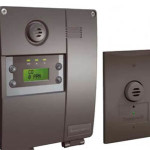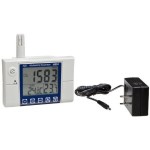Air | Ventilation in the Formation Building

 As this may be my last post on the blog before Christmas, if not the new year, let me take this opportunity to wish Merry Christmas to each of you, your families and other loved ones, and a prosperous, fulfilling and healthy New Year!
As this may be my last post on the blog before Christmas, if not the new year, let me take this opportunity to wish Merry Christmas to each of you, your families and other loved ones, and a prosperous, fulfilling and healthy New Year!
 And, as to the cocktail napkin I post here, a gift from an ever-alert St. Margaret’s Church, Annapolis (SMC) friend, drive safely through the holidays. (You caught the recycling symbol along the borders, right?)
And, as to the cocktail napkin I post here, a gift from an ever-alert St. Margaret’s Church, Annapolis (SMC) friend, drive safely through the holidays. (You caught the recycling symbol along the borders, right?)
What I’m up to with the blog at this point is trying to complete for you my review of the LEED scorecard as applied to the new Formation Building.
Among many Indoor Environmental Quality scorecard credits are two we plan to pursue for a point each: Outdoor Air Delivery Monitoring and Increased Ventilation.

Outdoor Air Delivery Monitoring— The intent of this credit is to provide equipment for monitoring the ventilation system with the objective of greater occupant comfort and well-being (viz. healthy building). As the Formation Building will be mechanically ventilated, CO2 concentrations will be monitored in densely occupied spaces.
What’s a densely occupied space? Answer: 25 or more people/1,000 sq. ft.; or, 1 person or more/40 sq. ft. To scale it for you in the new building, the Godly Play classrooms on the upper level are about 500 sq. ft. each. Each Day School classroom on the lower level is about 750 sq. ft. (as per state education code).
CO2 monitors will be wall-mounted from 3 to 6 feet above the floor. There’s an ASHRAE Standard dictating installation of direct outdoor airflow measurement devices such as this. These devices must be capable of measuring the minimum outdoor air intake flow within a specified percentage of accuracy.
Use of this equipment in the building will allow corrective action to be taken more rapidly if and when a buildup of harmful indoor air pollutants occurs. With the intensive Day School use on the lower level, outdoor air delivery monitoring is important for the health of students and staff, and assures peak performance in the learning environment. (The windows will be operable, so can be opened during temperate days.)

Increased Ventilation— Seeking this credit entails providing additional outdoor ventilation equipment. Again, for mechanically ventilated spaces, the breathing zone outdoor ventilation rates of all occupied spaces must equal or exceed 30% above the ASHRAE Standard. The effect of this additional ventilation is greater demand on the HVAC system. Happily, SMC will have the state-of-the-art HVAC system in the Formation Building, the Daikin VRV mechanical system. (Update: It was decided not to pursue this LEED credit as it was reducing our modeled energy savings and cost.)
I wrote about the Daikin system back in June. At the post accessible at this link, scroll down to Redux: “Comfortable? Just Right!” if you missed it.
As you probably know, this CO2 monitoring equipment can be purchased for use in your home too.
In Sundry Department—solid waste
Did you catch the article in The Capital back in October about manure as energy solution? The article, “Annapolis firm spreading manure as energy solution,” may be found at this link. (Sorry to say this link at capitalgazette.com has been deleted.) Perhaps better yet, check out its website video on gasification and “syngas,” a clean fuel similar to natural gas. The firm, Energy3 LLC designs, builds, operates and finances municipal energy projects, sometimes with its technology partner, Chinook Energy LLC.